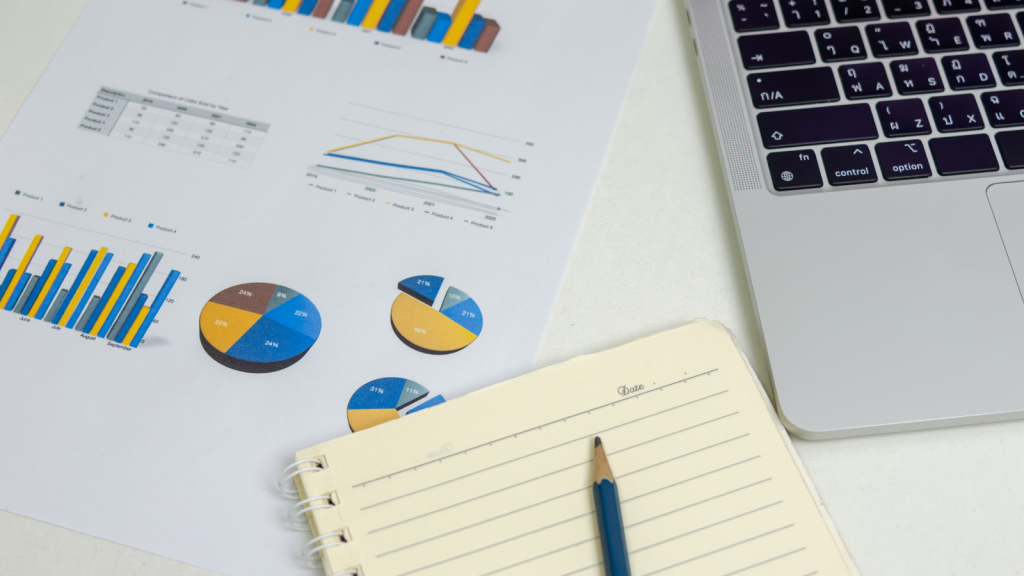Imagine you’re a social media manager for a thriving online clothing brand. Every month, your boss asks for a report on how well your posts, ads, and engagement strategies are working. You pull up some analytics, throw them into a PowerPoint, and call it a day. But what if I told you that most social media reports barely scratch the surface of what’s truly possible?
A good social media report isn’t just about numbers. It’s a story—a story of your brand’s online journey, its wins, its setbacks, and the roadmap ahead. In this guide, we’ll explore not just the usual report metrics but also the lesser-known yet powerful ways to make your social media reports stand out.
1. Start With the Right Questions
Too often, reports focus on what happened rather than why it happened. Before gathering data, ask yourself:
- What goals did we set for this period? (Brand awareness, lead generation, customer engagement?)
- Which key performance indicators (KPIs) matter most?
- What insights will help refine our strategy moving forward?
For instance, let’s say your goal is to increase engagement. Rather than just reporting ‘likes and comments,’ ask deeper questions: Which post formats worked best? What time of day saw the highest interaction? What content type drove the most shares?
2. The Hidden Power of Natural Language Processing (NLP)
One untapped secret in social media reporting is using NLP to analyze audience sentiment and engagement quality.
Let’s say your company posted a tweet that received 500 comments. Instead of just celebrating the number, use sentiment analysis tools (like MonkeyLearn or Brandwatch) to categorize the tone of those comments.
- Was the reaction positive, negative, or neutral?
- Were there recurring words or themes?
- Did influencers engage with it?
By implementing NLP insights, your report won’t just show numbers but reveal how people feel about your brand.
3. Go Beyond Vanity Metrics
It’s tempting to highlight likes and followers, but deeper performance indicators offer more meaningful insights. Try tracking:
- Share of Voice (SOV): How does your brand’s engagement compare to competitors?
- Virality Rate: What percentage of your audience is sharing your content?
- Conversion Attribution: How many sales or sign-ups came from social media campaigns?
For instance, if your boss asks, “How did our Instagram campaign perform?” don’t just say, “We gained 5,000 followers.” Instead, say, “We gained 5,000 followers, but 1,200 of them engaged with our Stories daily, and 300 purchased from our Instagram Shop link.”
4. The ‘Invisible Data’ You’re Ignoring
Some of the best social media insights come from unexpected places. Here are a few hidden gems:
- Click-through rate (CTR) on bio links: Many brands track post engagement but forget to analyze how often people click on their bio link.
- DM Conversations: Are customers frequently reaching out for product inquiries? If so, what are the common themes?
- Watch Time on Video Content: If people drop off after 10 seconds, your hook may need improvement.
5. Make It Visual and Digestible
Executives don’t want to sift through spreadsheets. They want clear, visual reports.
- Use bar graphs to compare month-over-month growth.
- Showcase heat maps to show the best-performing time slots.
- Include word clouds (using NLP tools) to highlight frequently mentioned topics in comments.
A good report tells a story. Instead of presenting raw numbers, frame it as a journey:
“This month, we aimed to increase engagement. By shifting to user-generated content and posting at peak hours, we saw a 40% increase in comments and a 25% boost in shares. However, sentiment analysis showed mixed reactions to our latest ad campaign, which we’ll adjust in next month’s strategy.”
6. Predict Future Performance
What if your report didn’t just summarize the past but forecasted the future?
With predictive analytics, you can:
- Identify content trends before they peak.
- Forecast engagement rates based on historical data.
- Anticipate drop-offs and adjust accordingly.
For example, if your data shows that Instagram carousel posts historically perform 30% better than single-image posts, your recommendation for the next quarter should focus on more carousels.
7. Tailor Reports for Different Audiences
Your CEO doesn’t need the same report as your content strategist. Customize reports accordingly:
- For Executives: Focus on ROI, revenue impact, and big-picture trends.
- For Marketing Teams: Highlight engagement rates, post-performance insights, and audience behavior.
- For Content Creators: Break down the specifics of which formats, hashtags, and CTAs worked best.
Final Thoughts: The Art of Storytelling in Reports
A social media report isn’t just about data—it’s about presenting a narrative. Instead of dumping numbers onto a slide deck, use these untold tips to craft a report that informs, engages, and guides future strategies.
Next time you compile a report, ask yourself: Am I just presenting numbers, or am I telling the story of our social media success?
By integrating NLP, predictive analytics, and customized storytelling, your reports will become indispensable assets—not just routine paperwork.
Now go ahead, create a report that wows!

